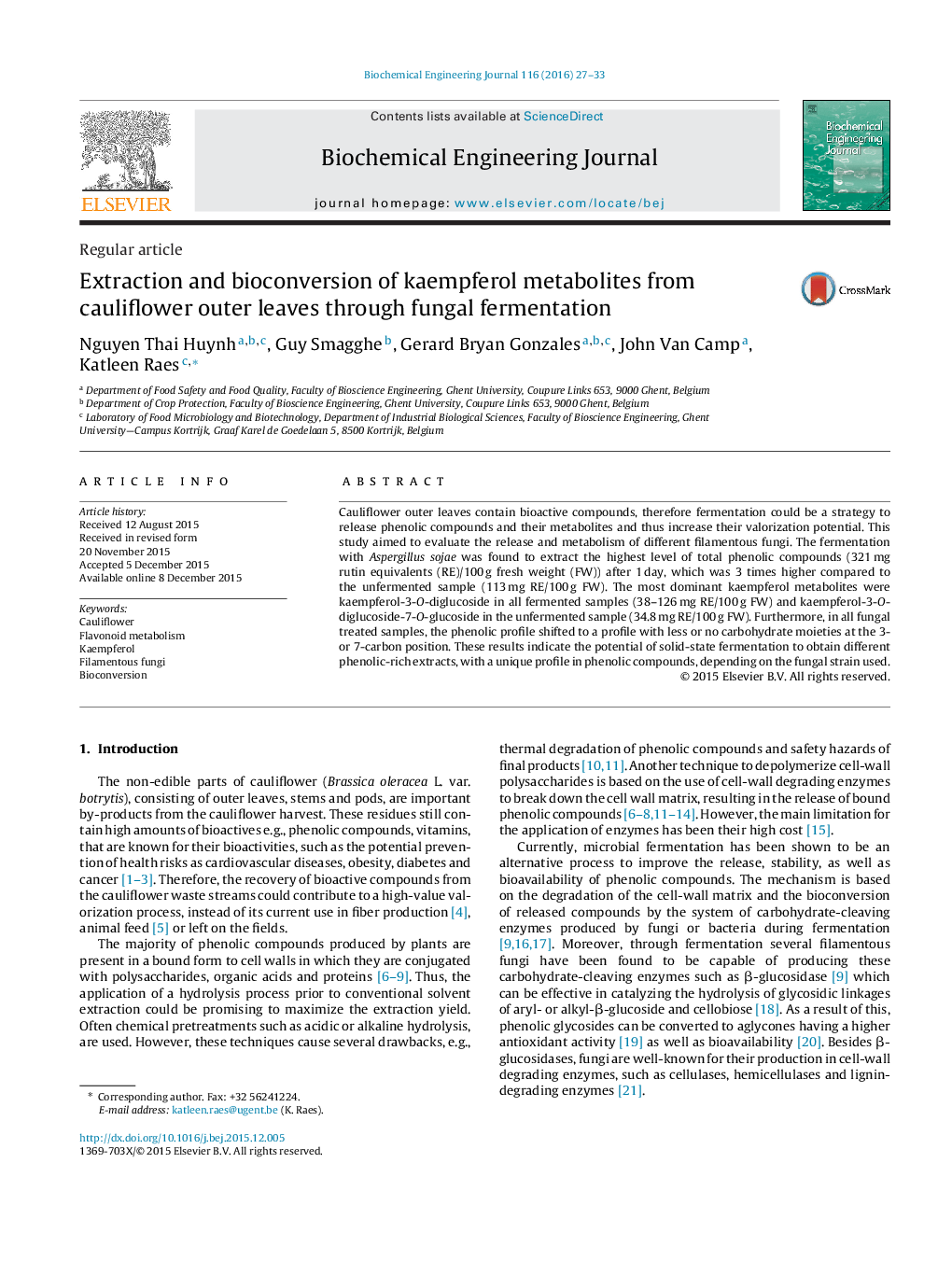| Article ID | Journal | Published Year | Pages | File Type |
|---|---|---|---|---|
| 6450456 | Biochemical Engineering Journal | 2016 | 7 Pages |
â¢Dominant flavonoids in cauliflower outer leaves are kaempferol glycosides.â¢Fungal fermentation results in a phenolic profile with lower glycosylation.â¢Three times more phenolic compounds were extracted by Aspergillus sojae compared to control.â¢The metabolic pathways of kaempferol glycosides into their corresponding compounds are proposed.
Cauliflower outer leaves contain bioactive compounds, therefore fermentation could be a strategy to release phenolic compounds and their metabolites and thus increase their valorization potential. This study aimed to evaluate the release and metabolism of different filamentous fungi. The fermentation with Aspergillus sojae was found to extract the highest level of total phenolic compounds (321Â mg rutin equivalents (RE)/100Â g fresh weight (FW)) after 1Â day, which was 3 times higher compared to the unfermented sample (113Â mg RE/100Â g FW). The most dominant kaempferol metabolites were kaempferol-3-O-diglucoside in all fermented samples (38-126Â mg RE/100Â g FW) and kaempferol-3-O-diglucoside-7-O-glucoside in the unfermented sample (34.8Â mg RE/100Â g FW). Furthermore, in all fungal treated samples, the phenolic profile shifted to a profile with less or no carbohydrate moieties at the 3- or 7-carbon position. These results indicate the potential of solid-state fermentation to obtain different phenolic-rich extracts, with a unique profile in phenolic compounds, depending on the fungal strain used.
